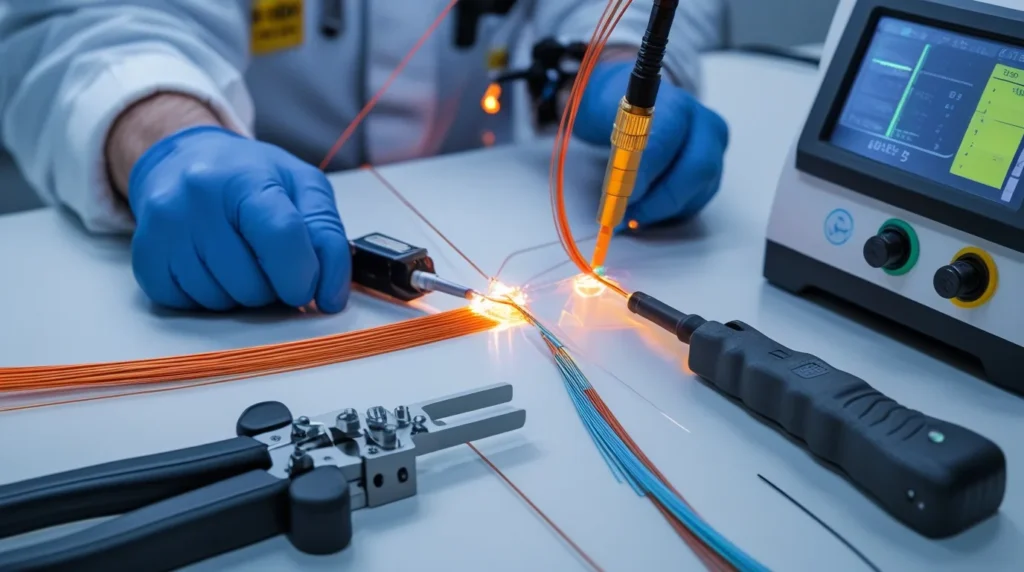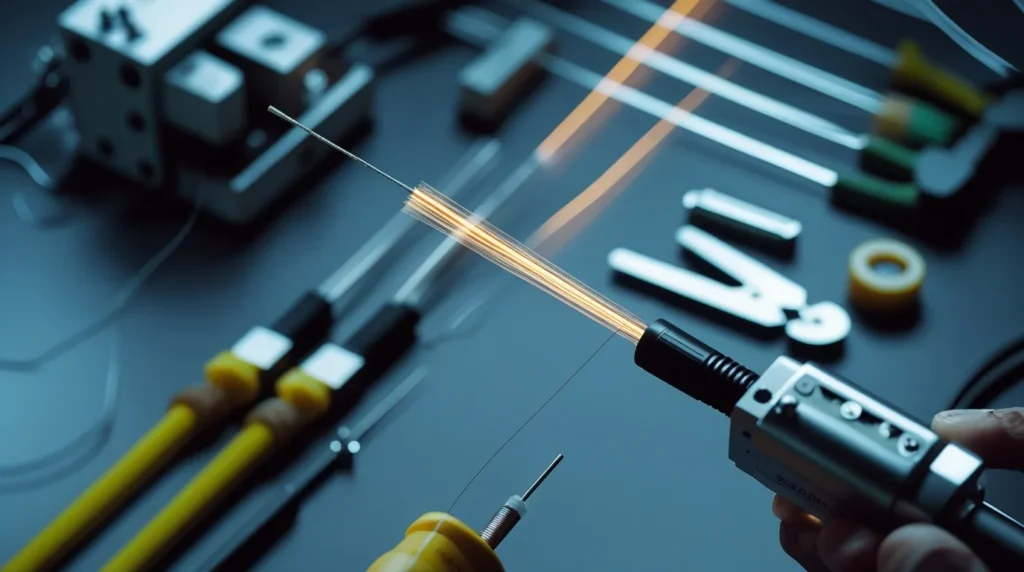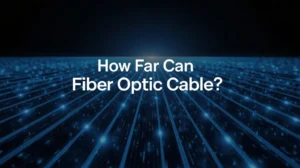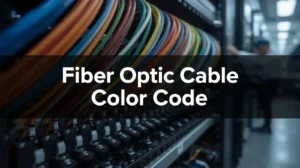What Is Fiber Splicing and Why Does It Matter?
Fiber splicing means joining two fiber optic cables together. It helps data travel smoothly across long distances. Fiber splicing is used when cables are broken or when extra cable needs to be added. It is an important part of building strong internet and communication networks. Fiber optics are very thin glass wires that carry signals as light. To keep these signals strong, the cables must be joined properly. Knowing how to do fiber splicing is important for making sure connections stay fast and reliable. Even small mistakes can cause problems with speed and quality.
The Evolution of Fiber Optics and Splicing Technology

Fiber optics have come a long way since they were first used. At first, splicing was done by hand using simple tools. Today, we have machines that make the process more accurate and faster. Splicing technology has improved so much that even tiny cables can now be joined with high precision. The newer tools help reduce loss of signal and improve speed. As the internet grows, better ways of splicing are needed. Fiber splicing is now a key part of building networks for schools, homes, businesses, and big cities.
Understanding the Basics of Splicing Fiber Optic Cable
Splicing fiber optic cable is not the same as connecting normal wires. Fiber cables carry light, not electricity. They need to be clean and perfectly aligned. The goal of splicing is to make the two pieces of glass touch and act like one. Splicing fiber optic cable helps repair breaks or join two ends when building a new system. There are special ways to do this so the light inside doesn’t get lost. A good splice keeps the signal strong and clear.
Two Main Types of Optical Fiber Splicing Explained

There are two common types of fiber splicing: fusion splicing and mechanical splicing. Fusion splicing uses heat to melt the ends of the fibers together. This type of splice gives the best result and very low signal loss. Mechanical splicing does not use heat. Instead, it lines up the fibers using a special tool and holds them in place with glue or gel. Mechanical splicing is faster and good for short-term use or small repairs. Both methods are useful, depending on the situation.
Tools and Safety Gear Needed for Fiber Cable Splicing
To splice fiber cable, you need the right tools and safety gear. Basic tools include a fiber cleaver, fiber stripper, cleaning wipes, and a splicing machine. A fiber optic splicer helps make clean joints. You also need a light source and power meter to test your work. Always wear safety glasses and gloves to protect your eyes and hands. Keep your workspace clean to avoid dust, which can block light signals. With the right tools and care, splicing fiber cable becomes easier and safer.
How to Do Fiber Splicing: A Step-by-Step Beginner’s Guide
Step 1: Prepare the cable – Strip the outer jacket to reach the fiber. Be gentle so you don’t break it.
Step 2: Clean the fiber – Use alcohol wipes to clean the bare fiber ends. Dirt can ruin the splice.
Step 3: Cleaving the fiber – Use a fiber cleaver to cut the fiber at the right angle. The cut must be smooth.
Step 4: Splice the fiber – Use a fusion or mechanical splicer. Line up both ends, then let the tool join them.
Step 5: Protect the splice – Cover it with a sleeve or heat-shrink tube.
Step 6: Test the splice – Use a power meter or OTDR to make sure the signal is strong.
These steps show how to do fiber splicing properly. It takes practice but gives clean results.
Common Mistakes When Splicing Fiber and How to Avoid Them
Many people make mistakes when learning to splice fiber. One big mistake is not cleaning the fiber. Even tiny dust can block the light. Another error is a bad cleave. If the fiber ends are not flat, the splice will be weak. Using the wrong splice method for the job can also cause problems. Some try to splice fiber optic cable without a machine and don’t get good results. Rushing through steps or skipping tests can lead to poor signal. Always work slowly, clean often, and double-check your work.
What Is a Fiber Optic Splicer and Do You Need One?

A fiber optic splicer is a tool that joins two fiber cables. It lines up the glass cores so light can pass through. Fusion splicers melt the ends together. Mechanical splicers hold the ends in place without melting. You need a splicer if you’re doing real fiber work. Using one makes splicing faster, cleaner, and more accurate. It’s hard to splice fiber optic wire without proper tools. For home jobs or internet cable fixes, a low-cost splicer can work. For big projects, use a professional fusion splicer.
Can You Splice Fiber Optic Cable Without a Machine?
Yes, it is possible to splice without a machine using a mechanical splicer. This method is okay for short-term or emergency fixes. You don’t need heat, but you do need a cleaver and alignment tools. This is not the best option for long-term jobs. Fusion splicing gives a stronger and cleaner connection. Mechanical splicing may cause higher signal loss. So yes, you can splice fiber optic cable without a machine—but it’s better to use the right tools if you want lasting results.
Fiber Optic Cable Splicing Services in Dallas, TX
When you need expert splicing for your fiber network, local help matters. In Dallas, TX, Heritage Cabling provides professional fiber optic cable splicing with reliable results. We use modern tools and skilled technicians to make sure your network runs fast and stays strong. Whether it’s a new install or a repair job, we handle it with care. From business networks to internet cable splicer services, we are trained to deliver top performance. Choose us when you want a job done right the first time.
Final Thoughts: Is Fiber Splicing Right for Your Project?
Fiber splicing is a useful skill that helps repair and build strong networks. If you’re working on fiber cable, knowing how to splice it correctly saves time and money. Still, it’s not easy without tools or training. Sometimes it’s best to call professionals like Heritage Cabling to ensure perfect results. Whether you’re learning or need expert service, fiber splicing is key to keeping internet and data systems working well.
Need help with fiber splicing or unsure where to start? Contact Heritage Cabling today to get expert help and a free quote.




